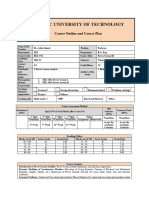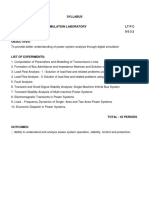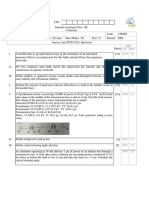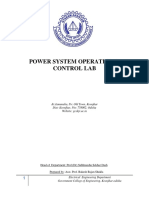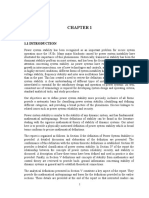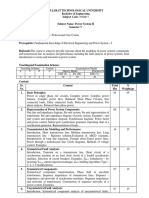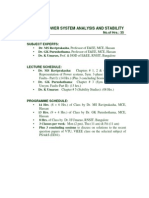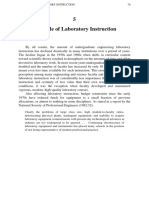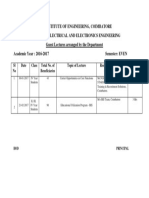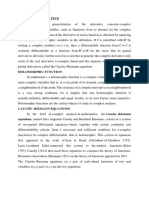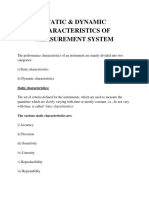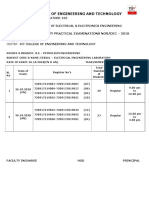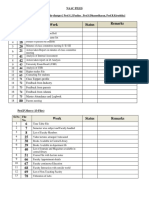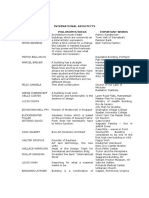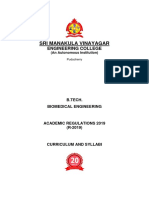0% found this document useful (0 votes)
80 views5 pagesCourse Data Sheet Ee Lab
This document provides information on the Electrical Engineering Laboratory course offered as part of the Mechanical Engineering degree program. The course is offered in the third semester, is worth 2 credits, and involves 4 contact hours per week. The syllabus includes 10 experiments involving testing of DC motors, transformers, synchronous motors, induction motors, and AC/DC starters. The objectives are to validate theoretical principles through experiments and familiarize students with electrical machines. Upon completing the course, students will be able to determine transmission line parameters, solve load flow problems, apply stability analysis, and relate concepts of load frequency control, automatic generation control, and automatic voltage regulation to power systems.
Uploaded by
Dhamu DharanCopyright
© © All Rights Reserved
We take content rights seriously. If you suspect this is your content, claim it here.
Available Formats
Download as DOCX, PDF, TXT or read online on Scribd
0% found this document useful (0 votes)
80 views5 pagesCourse Data Sheet Ee Lab
This document provides information on the Electrical Engineering Laboratory course offered as part of the Mechanical Engineering degree program. The course is offered in the third semester, is worth 2 credits, and involves 4 contact hours per week. The syllabus includes 10 experiments involving testing of DC motors, transformers, synchronous motors, induction motors, and AC/DC starters. The objectives are to validate theoretical principles through experiments and familiarize students with electrical machines. Upon completing the course, students will be able to determine transmission line parameters, solve load flow problems, apply stability analysis, and relate concepts of load frequency control, automatic generation control, and automatic voltage regulation to power systems.
Uploaded by
Dhamu DharanCopyright
© © All Rights Reserved
We take content rights seriously. If you suspect this is your content, claim it here.
Available Formats
Download as DOCX, PDF, TXT or read online on Scribd
/ 5
